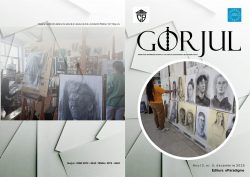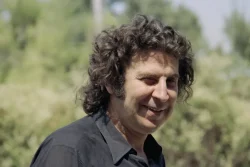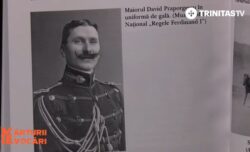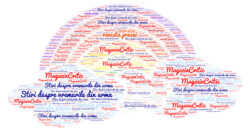Approaches to teaching literature

Foto: Mediafax
CONSTANTIN CRISTINA,
Colegiul ”Stefan Odobleja”,
Craiova, jud. Dolj
Despite these sporadic efforts, however, the teaching of English literature at the undergraduate level as the Literature Major has remained essentially the same throughout this long period – teacher-centered and teacher-directed, the literary texts being presented to students through lectures, summaries and paraphrases, with little or no involvement of students in understanding and appreciating those texts on their own.
The situation, in the past, was not different. Traditionally, the language teacher was educated in its literature, which often forced particular works of literature on students who were not yet ready for them and attempted transmission of irrelevant information about books and authors, i.e. knowledge about literature, and has nothing to do with the ability to profit from reading the literature itself
The teaching of English literature to students majoring in English, however, has seen very little change over the past few decades. In many classrooms, the teaching of literature has remained unchanged with emphasis on teacher-centered and text-directed approaches and methods (e.g., lectures; period and genre surveys; biographical summaries; teacher’s explication and ‘critical analyses’ of canonical texts; stereotyped exam questions requiring stereotyped answers).
Teachers continue to teach literary texts “as finished products, to be unilaterally decoded, analyzed, and explained” (Kramsch, 1985, p. 356; cited in Harper 1988). Such an approach tends to minimize learner involvement, engagement and participation, and undermines the value of learners’ responses to literature as readers in their own right, resulting in frustration and a lack of interest and motivation on the part of learners.
Most of our undergraduate students also have limited linguistic and critical-analytical skills for responding to literary texts as works of art and for articulating their experiences of reading such texts when asked to do so. For them, the course in English literature may become a “painful lesson in deciphering” (Santoni, 1972, p. 434; cited in Harper 1988).
The methodology has been confined almost to lectures. Classroom teaching usually consists of a long monologue by the teacher on a piece of literature, this monologue taking the form of the teacher primarily attempting to explain the meaning of the text (often several meanings!) preceded by a ‘brief’ introduction to the author and his works. Teachers are not adequately trained to teach literature in innovative and creative ways.
The teacher may be much admired for his erudition or scholarship, but his lectures are little understood. As a result, students rely almost exclusively on guidebooks and resort to rote learning. In other words, there has been very little reading and study of literature with clearly spelt out objectives and methodology.
Teachers who belong to the ‘literature establishment’ wish to follow teacher-centred activities, such as informative background lectures, reading the text (mostly aloud) in class, paraphrasing the content, presenting the critical views of established scholars and critics, leading and loaded questions for ‘understanding’ the text, and requiring students to produce text-related essays (Akyel and Yalcin, 1990, pp.176-177).
This ‘old’ or traditional method of teaching English literature as a body of received knowledge to be learnt largely through the lecture mode is frequently criticised as being too productcentred, tending to impose the meaning of texts (established by academics and professional critics) on the student (Elliott, 1990, p.192).
REFERENCES:
• Gilroy, M. and B. Parkinson. (1997). Teaching literature in a foreign language. Language Teaching, 29: 213-225.
• Goodwyn, A. and K. Findlay (2002). Literature, literacy and the discourses of English teaching in England: A case study. L1-Educational Studies in Language and Literature, 2: 221-238.
• Gower, R. and M. Pearson (1986). Reading literature. London: Longman.
• Hafiz, F.M. and I. Tudor (1989). Extensive reading and the development of language skills. ELT Journal, 43/1:4-13.
• Harper, S. N. (1988). Strategies for teaching literature at the undergraduate level. The Modern Language Journal, 72 (4): 402-408.
• Hirvela, A. and J. Boyle. (1988). Literature courses and student attitudes. ELT Journal, 42/3:179- 184
. • Kramsch, C. (1985). Literary texts in the classroom: A discourse model. The Modern Language Journal, 69 (1985): 356-366; cited in Harper (1988).
• Krashen, S. 1989. “We Acquire Vocabulary and Spelling by Reading: Additional Evidence
• Lazar, G. (1993). Literature and language teaching. Cambridge: Cambridge University Press.
• Lazar, G. (1994). Using literature at lower levels. ELT Journal, 48/2:115-124.
• Mackay, R. (1992). Lexicide and goblin-spotting in the language/literature classroom. ELT Journal, 46/2: 199-208.
• Maley, A. (1989). Down from the pedestal: literature as resource. In Literature and the Learner: Methodological Approaches. ELT Documents 130. London: Macmillan.
• Maley, A. (1995). Short and sweet: short texts and how to use them, Volume 2. Penguin Books.
- Suntem cenzurați online/pe rețelele de socializare. Zilnic, puteți accesa site-ul pentru a vă informa.
- Contactați-ne oricând.
- Dacă apreciați munca noastră, vă invităm să dați un ,,Like” și să distribuiți pagina de Facebook (conținut exclusiv).
- Pentru o presă independentă, sprijiniți-ne cu o donație. Vă mulțumim!
MAGAZIN CRITIC – ziar online cultural, conservator. Contează pe ȘTIRI ce contează!






